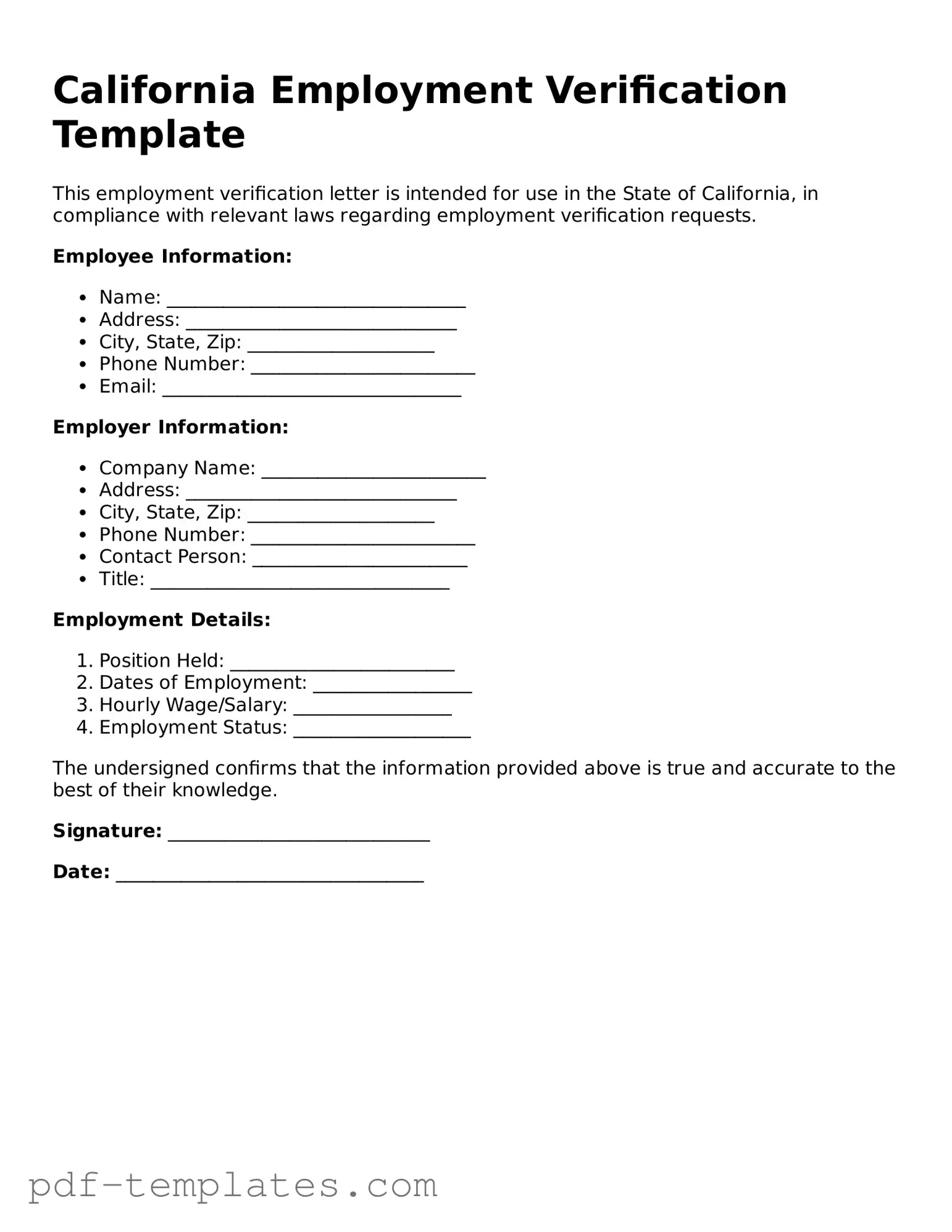The California Employment Verification form is quite similar to the I-9 form, which is used by employers to verify an employee's identity and eligibility to work in the United States. Like the California Employment Verification form, the I-9 requires the employee to provide specific documentation that proves both their identity and their legal authorization to work. This document is essential for compliance with federal regulations, ensuring that employers do not hire individuals who are not legally permitted to work in the country.
Another document that bears resemblance to the California Employment Verification form is the W-2 form. While the W-2 is primarily used for tax purposes, it also serves as a verification of employment. Employers provide this form to employees at the end of each tax year, detailing the wages earned and taxes withheld. Both forms help establish a record of employment, although the W-2 focuses more on financial aspects rather than eligibility to work.
The Social Security Administration’s Form SS-5 is another document that shares similarities. This form is used to apply for a Social Security card, which is essential for employment verification. Like the California Employment Verification form, the SS-5 requires proof of identity and, in some cases, proof of citizenship or lawful immigration status. Both forms aim to ensure that the individual has the necessary credentials to work legally in the United States.
Additionally, the Form 1099 is comparable in that it is used to report income earned by independent contractors and freelancers. While it does not serve the same purpose as the California Employment Verification form, it acts as a verification of income received for services rendered. Both documents play a role in the overall employment verification process, albeit from different perspectives—one focusing on employee status and the other on income reporting.
The Employment Eligibility Verification (EEV) form, often referred to as the E-Verify, is also similar. This electronic system allows employers to verify the employment eligibility of their employees. Like the California Employment Verification form, the E-Verify process requires the submission of information that confirms an individual’s right to work in the U.S. Both forms are critical tools for employers to ensure compliance with employment laws.
The Federal Tax Form 941 is another document that relates to employment verification. This form is used by employers to report income taxes, Social Security tax, and Medicare tax withheld from employee wages. While it serves a different function, it also verifies that an employer has employees and provides a record of employment for tax purposes, much like the California Employment Verification form does for employment status.
Similar to the California Employment Verification form, the Form 5500 is utilized for reporting purposes, specifically for employee benefit plans. This document provides information about the plan's financial condition, investments, and operations. While it pertains to benefits rather than employment status, both forms contribute to a comprehensive understanding of an individual's employment situation and the employer's compliance with regulations.
The Certificate of Employment is another document that serves a similar purpose. This certificate is issued by employers to verify an employee's work history and is often required for various applications, such as loans or visas. Like the California Employment Verification form, it confirms an individual’s employment status and can include details about their position, duration of employment, and salary.
Finally, the Pay Stub is comparable in that it provides a record of employment and earnings. It details the employee’s wages, deductions, and hours worked, serving as a tangible proof of employment. While it does not verify eligibility to work, it complements the California Employment Verification form by providing evidence of ongoing employment and financial compensation.
